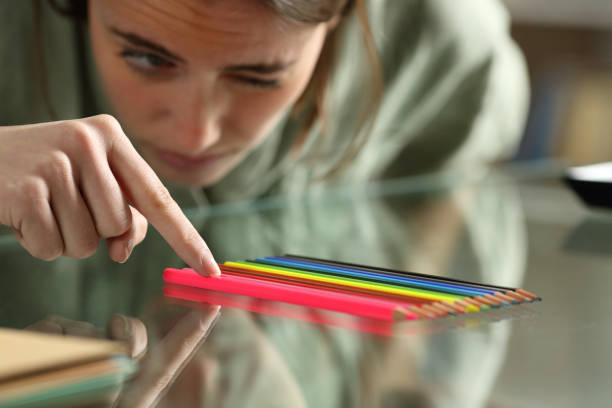
Exploring the Puella Archetype: A Perspective from Jungian Psychology
We often hear the advice: follow your passions and live according to your values. But what if you’ve lost your way? What if life feels meaningless? Examining this through the archetype of the "puella" in Jungian analytical psychology, we find her as a universal, symbolic, and psychological figure. The puella is youthful, charming, engaging, and magnetic. She represents vibrancy, creativity, and the wisdom of the feminine in various forms. She looks to the past while moving forward, embodying possibilities in all of us. She encourages creativity and forward-thinking expression. However, when distorted or troubled, she halts personal growth until these issues are resolved.
There are many aspects of this part of the personality. It involves a journey from the traditional Jungian approach to modern times, reconnecting lost parts of oneself. The puella must confront and move past various challenges, especially how narrowly she’s been defined. The lines between fiction and reality can blur, and her experiences may confuse emotions. Yet, she can evolve from this confusion into desire, imagination, and access to insights that drive transformation.
I write this from my experience as a Jungian therapist working with people who struggle to channel the puella energy creatively or tap into its potential. The puella has often been misunderstood, dismissed as eternally youthful, impractical, naïve, or even self-centered. In extreme cases, the puella type cannot fully connect with the present, fails to take themselves or the world seriously, and becomes caught in a web of mental complexities. As Jung noted in "The Psychology of the Child Archetype," the "eternal child... is an extraordinary experience, a confusion, an obstacle, and a divine right; a mystery that determines the ultimate value or worthlessness of a personality" (1968, CW 9i, para. 300).
The puella is associated with a certain freshness and curiosity. She can be any age, full of ideas and hope. Yet, she can also be weighed down by an underlying emptiness, carrying an invisible burden. Her vitality is diminished, as is her strength. Though she is bright and quick, her personality has yet to fully develop. She needs time, as something has become stuck. This could stem from parental neglect, dysfunctional family systems, or socially imposed limitations. She can be trapped, living behind barriers, consumed by negative complexes, unable to access a fuller sense of self. This exploration is about freeing her from these constraints, moving her toward what she can become.
The puella represents the youthful feminine on the edge of change. She exists between her natural energy, youthfulness, and creativity, yet can be pulled back into conventional paths. The puella is imaginative, unique, ambitious, and original. However, she is often troubled and can lose her way. Whether in women or men, heterosexual, LGBTQ+, or nonbinary individuals, the puella remains a psychological concept to be understood and brought into awareness. She is fluid, embodying the feminine in ways different from past generations when she was repressed or denied. This puella exploration marks a period of gender fluidity and expanding definitions of femininity. It places us in a new space, with evolving self-definitions, a shifting kaleidoscope of possibilities.
Puella stands at the intersection of myth, history, society, and personal experience, representing one form of the feminine archetype. She channels the feminine voice from its conformity and suppression into creative expression with her rebellious spirit. Challenging traditional patterns takes courage, commitment, and perseverance. This unfolds through the process of individuation, as one explores different aspects of the mind to discover what it means to be true to oneself.
Too often, puella has been held back by harsh inner critics, severe self judgment, and emotionally distant systems. Without a clear inner mirror, she evaluates herself through a lens of inadequacy. She longs to be valued, but nothing seems to fill the inner void. Trapped in fantasy, she becomes submissive to the male gaze, halting her individuality. Narcissistic wounds align with an underdeveloped capacity for empathy, both for herself and others. She is hard on herself, constantly critical. Behind this self-criticism is a powerful, jealous drive to win. Failing to meet these internal demands leads to anxiety and depression.
This writing seeks to protect the puella aspect of personality from being dismissed as a sign of arrested development. When growth is halted, one cannot truly evolve. Because she has been seen as incomplete, the word "girl" has become synonymous with stunted progress. Here, however, we revalue the "girl" the puella and recognize her storehouse of gifts and creativity as an essential part of the personality. The puella within all of us is unique, not as an incomplete masculine form or in imitation of men, but as powerful and fully realized in her own right. While puella is the eternal girl, she is a late bloomer, containing potential that can emerge throughout life.

Her potential unfolds in images, feelings, bodily sensations, dreams, and synchronicities that illuminate transformative experiences. Puella's strong desire for life is intense and full of passion. Yet, many have lost sight of what they love and what brings them joy. They yearn to reclaim their bodies and spirits, to follow their passions and spark creativity, to be fully alive, forging new paths. Puella symbolizes the budding of potential, youth, and new beginnings alive in all of us. Puella deserves a fuller understanding of her role and value in both personality and culture. Philosophically, the unfolding of ideas and pathways to growth is inherent in the puella herself. Our challenge is to stay youthful at every stage of life, tapping into that energy to remain creative, innovative, and true to our unique selves.